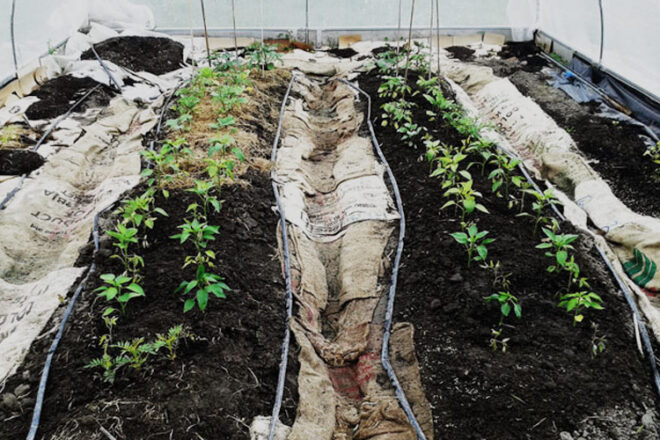Upcycling for the Garden
When cafes & roasteries turn raw coffee beans into the drink we know & love, there are a number of byproducts that often go to waste or landfills. Thankfully, pretty much all of these byproducts are compostable, recyclable or upcyclable.
Grounds for the ground
Spent coffee grounds are a useful addition to your garden, especially for making rich compost, as they have a similar nitrogen to carbon ratio as manure. This will give your garden an extra boost of energy, which is appreciated by most plants (especially leafy green crops such as lettuce, corn et cetera). It is a major fuel for microorganisms which help breakdown organic matter into compost. When combined with a carbon source (e.g. fallen leaves, straw, newspaper et cetera) this provides good levels of phosphorus & potassium too. In fact, it is possible to make a complete, nutrient-rich compost by using just coffee grounds, shredded newspaper & kitchen waste.
Do you have a worm farm? Give them some spent coffee grounds to chew on, they'll love it. Spend grinds will also help improve the soil structure by aerating the soil & creating micropores for water to infiltrate & make nutrients readily available to your plants roots.
Spent coffee grounds are rumoured to deter snails & slugs. They don't like the texture or aroma - so sprinkle some around crops like lettuce, strawberry plants, cabbage et cetera. to keep them relatively slug & hole-free! There is also a theory that cats don't like the smell either so you could try using it to stop those cheeky cats digging up your newly planted beds.
A common misconception is that grounds are acidic & good for plants that prefer more acidic soil. However, most of the acidity is water soluble & ends up in your drink rather than the grounds, which have a pH level close to neutral.
Is your garden lacking fibre?
Underground Coffee's roastery in Christchurch produces copious amounts of coffee husks, also known as chaff, from roasting the green beans. This is a byproduct that can be used as a mulch to conserve water & suppress weeds. Pro tip — lay the chaff out on a still day & water it in so that it doesn't just blow away (or use it in a glass house). These husks are rich in nitrogen and potassium, as well as cellulose & other organic matter that soil life thrives on.
Chaff can also be used as a soil conditioner by simply digging it in before sowing.
Coffee grounds and chaff are available from our brew bar and roastery at 190 Durham St, Sth, Christchurch Central.
Sack up & get growing
Burlap & jute sacks are great for growing vegetables, herbs & even small trees in. They provide good drainage & are made of natural fibres, so they breakdown over time. This means you could later transfer the plant, sack & all, straight into the ground, without shocking it.
Coffee sacks are also great weed mats for pathways (newspaper or cardboard underneath will help suppress weeds even more) or use them as a dry mulch to prevent strawberries, cucumbers, pumpkins et cetera from rotting on the ground.
Gowing Potatoes?
Even if you have very little space outside, you could still grow potatoes in a few sacks on a porch so long as it gets at least 4-5 hours of sun a day. There's practically nothing to it! Throw about a foot of dirt (and maybe some spent coffee grinds as compost) into rolled up sacks, plonk your seed potatoes just under the soil surface, and water them thoroughly about once a week or fortnight (depending on how dry it is). Then you just sit back & watch them grow! Occasionally unroll the sack & add more soil; i.e. when your shoots get leggy, usually 2-3 times suffices. The main thing is to only expose the leaves to the sun, this ensures that you won't get green potatoes, which are the less tasty & more toxic variety!
Improve Drainage
Drainage can be further improved by keeping sacks on a pallet or over gravel, & by using soil that is not too clayey. Clay particles & water molecules can get locked in an eternal embrace which leaves out oxygen, so the roots cannot breathe.
If given a bit of TLC every so often you should get a pretty good haul of home grown tasty potatoes in each sack. Just rip it open & harvest your spoils!
Where to get them
Sacks are available from Underground Coffee Roasters, 190 Durham St Sth, Christchurch Central, for gold coin donation.
